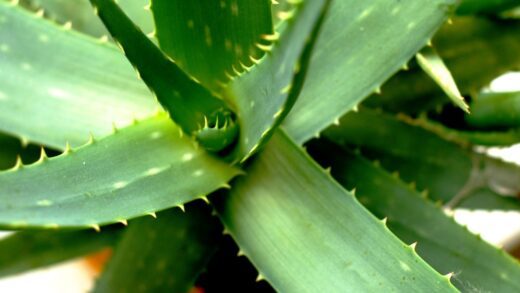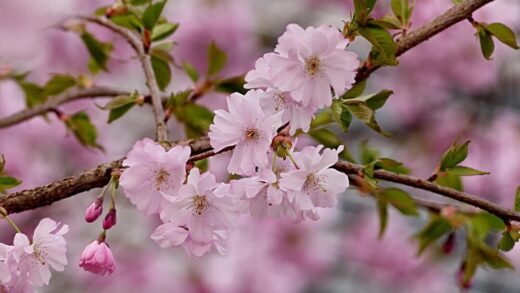The relationship between the Scots pine and sunlight is fundamental and non-negotiable; it is a quintessential sun-loving species that demands full and direct light to achieve its full potential. In its natural environment, it is a pioneer species, one of the first trees to colonize open, sun-drenched clearings and disturbed land. This intrinsic need for intense light dictates every aspect of its successful cultivation in a landscape setting, from initial site selection to its long-term health and structural development. Planting a Scots pine in anything less than full sun is a recipe for a weak, sparsely foliated, and disease-prone tree. Understanding and respecting this absolute requirement is the most critical factor in growing a healthy and aesthetically pleasing specimen.
The term “full sun” in horticulture is generally defined as a minimum of six to eight hours of direct, unfiltered sunlight per day during the growing season. For the Scots pine, this should be considered a bare minimum, as it will happily tolerate and indeed thrive in locations that provide sunlight from dawn until dusk. The energy it derives from sunlight through photosynthesis fuels all of its growth, from the expansion of its needles and shoots to the development of its extensive root system and the production of the protective resins that help it fend off pests and diseases. A lack of sufficient light directly translates to a lack of energy, leading to a state of chronic stress.
When a Scots pine is deprived of adequate sunlight, the consequences are predictable and visually apparent. The tree’s growth will be slow and stunted, and its foliage will become thin and sparse, particularly on the shaded side and in the lower and inner parts of the canopy. The needles may be shorter than normal and may have a paler, less vibrant color. This lack of dense foliage not only detracts from the tree’s ornamental value but also reduces its photosynthetic capacity, further weakening it in a downward spiral of decline. A shaded pine is a struggling pine.
Furthermore, a lack of direct sunlight and the associated poor air circulation create a microclimate around the tree that is conducive to the development of fungal diseases. The needles remain damp for longer periods after rain or dew, providing an ideal breeding ground for pathogens like needle cast and tip blight. A tree that is already weakened by low light levels will also be less able to defend itself against these diseases, as well as against insect pests. Therefore, providing full sun is not just about promoting growth; it is a fundamental aspect of the tree’s preventative healthcare.
The importance of full sun exposure
The Scots pine’s requirement for full sun is deeply embedded in its ecological strategy. As a pioneer species, it is adapted to colonize open ground quickly after a disturbance like a forest fire or logging. In these environments, there is little to no competition for sunlight. The tree’s seedlings are programmed to grow rapidly upwards towards the light source, out-competing grasses and other low-growing vegetation. This inherent nature means it does not possess the adaptations of shade-tolerant species, such as more efficient photosynthetic pigments or a layered canopy structure designed to capture diffuse light.
More articles on this topic
In a landscape context, this means that the Scots pine is an excellent choice for open lawns, exposed hillsides, or as a standalone specimen where it will not be overshadowed by other trees or buildings. Its need for sun exposure across its entire canopy influences its natural growth habit. When grown in the open, it develops a broad, picturesque crown because all of its branches, from the lowest to the highest, receive ample light. In a dense forest, it grows a tall, straight trunk with a small tuft of a crown at the very top, as the lower branches are shaded out by competitors and die off.
The quality of the light is also important. The tree requires direct, intense sunlight to trigger optimal rates of photosynthesis. Filtered or dappled light, such as that found under the canopy of a large deciduous tree, is insufficient. Even if a location receives more than six hours of this type of weak light, it will not meet the needs of a Scots pine. This is a crucial consideration when planning a garden, as a small tree planted nearby might eventually grow to cast a shadow on the pine, leading to its decline years down the line.
The consequences of insufficient light go beyond just aesthetics. A light-starved pine will have a weaker structural integrity. The branches will be longer and thinner as they stretch in search of light, a phenomenon known as etiolation. These weak, elongated branches are more susceptible to breaking under the weight of snow, ice, or even just strong winds. A tree grown in full sun, by contrast, will have a sturdier, more compact structure with stronger branches, making it a much more resilient and safer landscape tree.
Light needs throughout the life cycle
From the moment a Scots pine seed germinates, its life is a quest for light. Seedlings require bright, direct sunlight to grow vigorously and out-compete surrounding weeds. In a natural setting, a seedling that germinates in deep shade has virtually no chance of survival. For horticultural propagation, this means that once seedlings have germinated, they should be gradually acclimated to full sun conditions to promote strong, stocky growth. Seedlings grown in low light will be tall, spindly, and weak.
More articles on this topic
As a young sapling, the need for light remains paramount. This is the period when the tree is establishing its main structural framework. Full sun exposure allows the young tree to develop a strong central leader and a well-balanced arrangement of lateral branches. A young tree that is shaded from one side will tend to grow asymmetrically, leaning and reaching towards the available light source. This can result in a permanently crooked trunk and a poorly balanced crown that can be difficult or impossible to correct later in its life.
For mature Scots pines, the requirement for full sun does not diminish. A mature tree needs ample light to maintain the health of its entire, extensive canopy. The lower branches, in particular, will only be retained if they receive sufficient direct sunlight. As a pine ages, it is natural for some of the lowest, most heavily shaded branches to die off. However, if a mature tree begins to lose branches higher up in the canopy, or if the entire canopy starts to look thin, a change in light conditions—such as a neighboring tree growing larger—is often the primary cause.
Even the reproductive success of a Scots pine is tied to its light exposure. The production of both male and female cones is an energy-intensive process. A tree growing in full sun will produce a much more abundant cone crop than a tree that is struggling in the shade. This is important for the natural regeneration of the species and is also a general indicator of the tree’s overall health and vigor. A well-illuminated tree has the surplus energy required to invest in reproduction, while a light-starved tree must devote all of its limited resources simply to survival.
Effects of insufficient light
The most immediate and obvious effect of insufficient light on a Scots pine is a dramatic reduction in foliage density. Pines are programmed to shed needles and branches that are not producing enough energy to support themselves. In a low-light situation, the tree will begin to shed its inner and lower needles and branches, as they are a net energy drain on the plant. This self-shading process results in a tree that looks “leggy,” with foliage concentrated only at the very tips of the branches, creating a sparse and unattractive appearance.
In addition to foliage loss, the new growth on a shaded pine will be noticeably weaker. The annual growth shoots, or “candles,” will be shorter and thinner than on a healthy, sun-grown specimen. The needles that develop from these weak candles may also be shorter and have a less vibrant, often yellowish-green color, indicative of reduced chlorophyll production and poor photosynthetic efficiency. This lack of vigorous new growth means the tree is unable to effectively replace its older needles as they are naturally shed, contributing further to the thinning of the canopy over time.
A shaded environment also makes the Scots pine significantly more vulnerable to a range of secondary problems. The damp, stagnant conditions created by shade are ideal for the proliferation of fungal diseases like needle cast and tip blight. A tree that is already weakened by a lack of light energy has fewer resources to mount a defense against these pathogens, allowing them to take hold and cause more severe damage. The tree’s weakened state also makes it a more attractive target for opportunistic insect pests.
Ultimately, a Scots pine planted in a location with insufficient light will experience a slow, progressive decline. It will never achieve the majestic form and rugged character for which the species is prized. Instead, it will remain a weak, struggling specimen that is in a constant state of stress. In the most severe cases of light deprivation, the tree may eventually die, not directly from the lack of light itself, but from the cumulative effect of stress and the secondary diseases and pests that it is unable to fight off. There is no horticultural substitute—no amount of fertilizer or water—that can compensate for a fundamental lack of sunlight.
Site selection for optimal light
Given the critical importance of sunlight, site selection is the most crucial decision you will make when planting a Scots pine. Before you even purchase a tree, you must carefully observe the proposed planting location and track the path of the sun throughout the day and at different times of the year. It is essential to identify a spot that receives at least six to eight hours of direct, unobstructed sunlight daily. An ideal site would be an open area in a lawn or field, far from the shadow of buildings or other, taller trees.
When assessing a site, you must think in four dimensions, considering the element of time. Consider the future growth of both the Scots pine itself and any surrounding vegetation. A small, newly planted deciduous tree nearby may not cast much of a shadow now, but in ten or twenty years, it could grow to tower over the pine, plunging it into shade. You must plan for the mature size of all the plants in your landscape design to ensure that the pine’s access to sunlight will not be compromised in the future.
You should also be aware of the “rain shadow” effect that can be created by buildings and dense tree canopies, which is often accompanied by a “light shadow.” Areas on the north side of buildings or dense stands of trees will receive the least amount of direct sunlight and are completely unsuitable for a Scots pine. An open location with a southern, eastern, or western exposure is far more appropriate. A site on a gentle, south-facing slope is often perfect, as it maximizes sun exposure and typically offers the excellent soil drainage that pines also require.
If you have an existing Scots pine that is struggling due to encroaching shade from other trees, you may be faced with a difficult decision. The best course of action for the health of the pine is to selectively prune or even remove the competing trees to restore direct sunlight to the pine’s canopy. While this can be a drastic step, it is often the only way to save a declining pine. Attempting to improve the health of a shaded pine with fertilizers or other treatments without first addressing the core issue of insufficient light will be a futile exercise.
📷 Arnstein Rønning, CC BY 3.0, via Wikimedia Commons

















